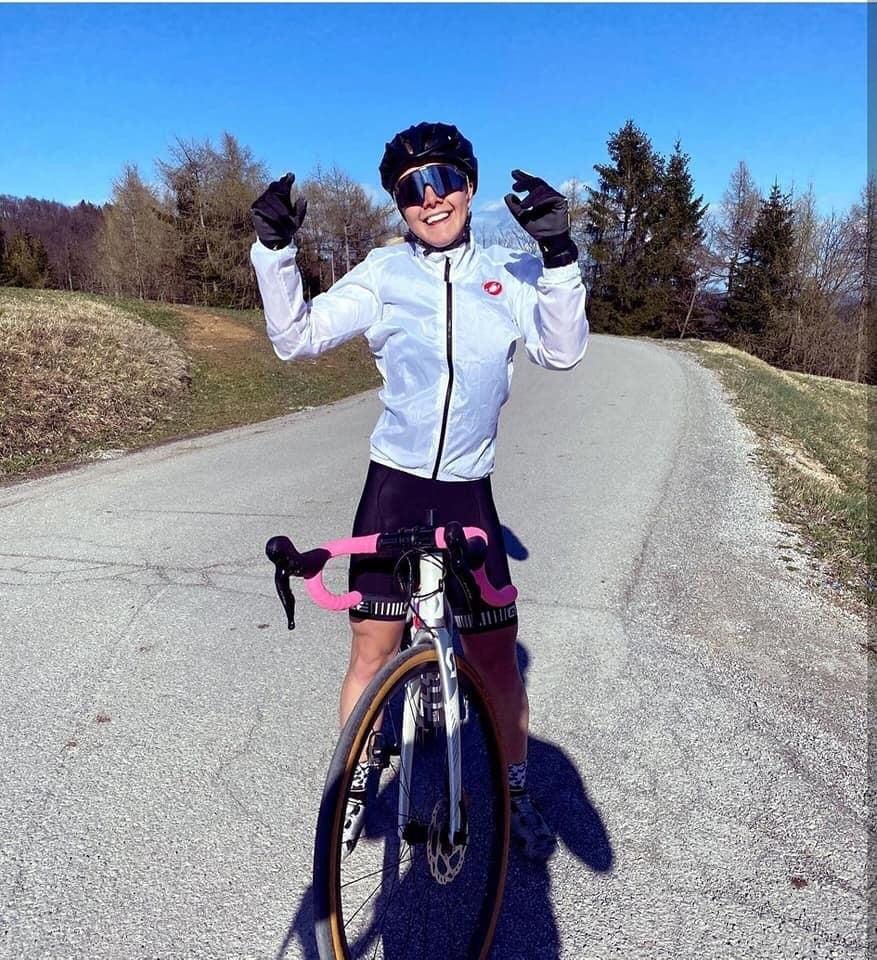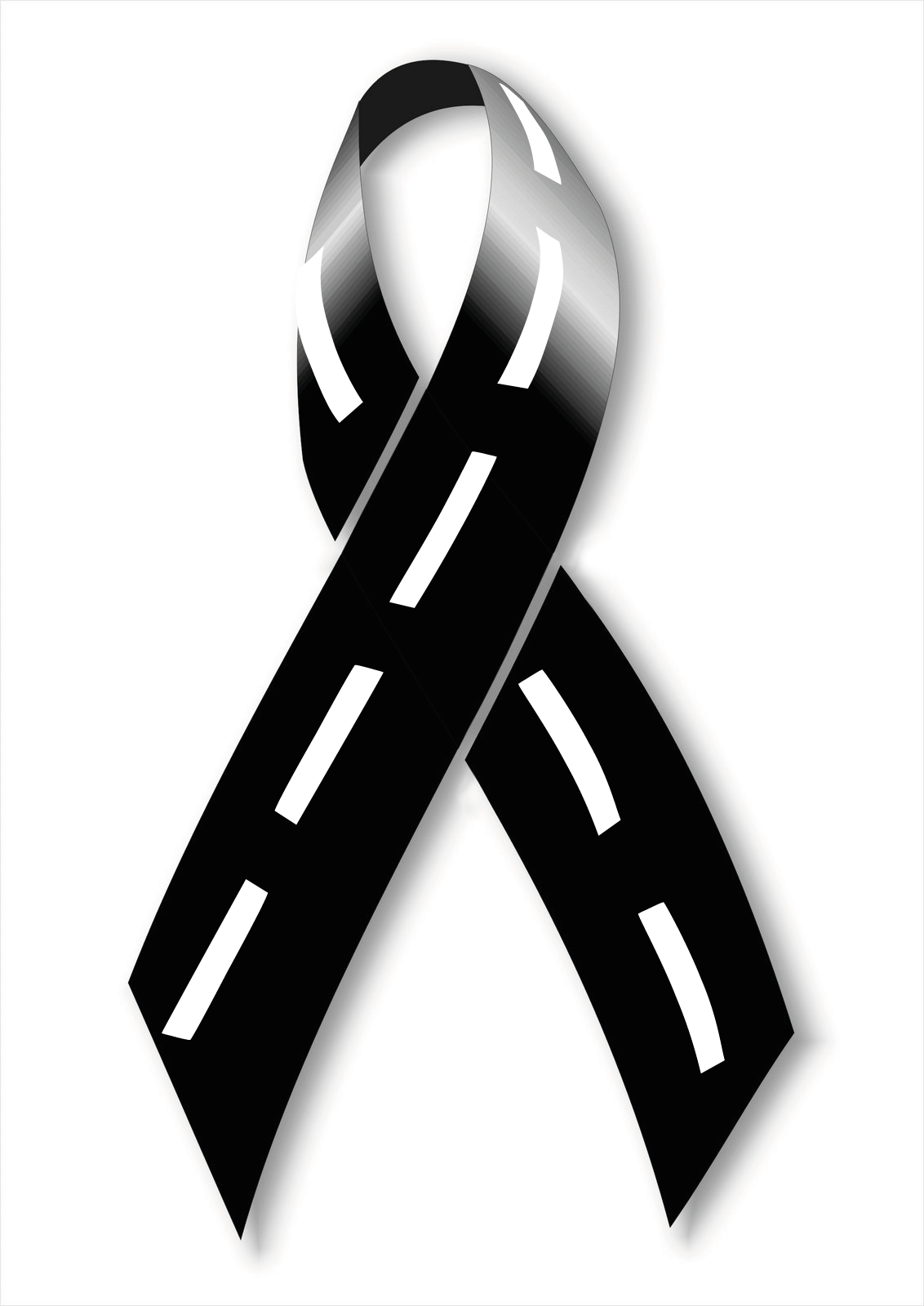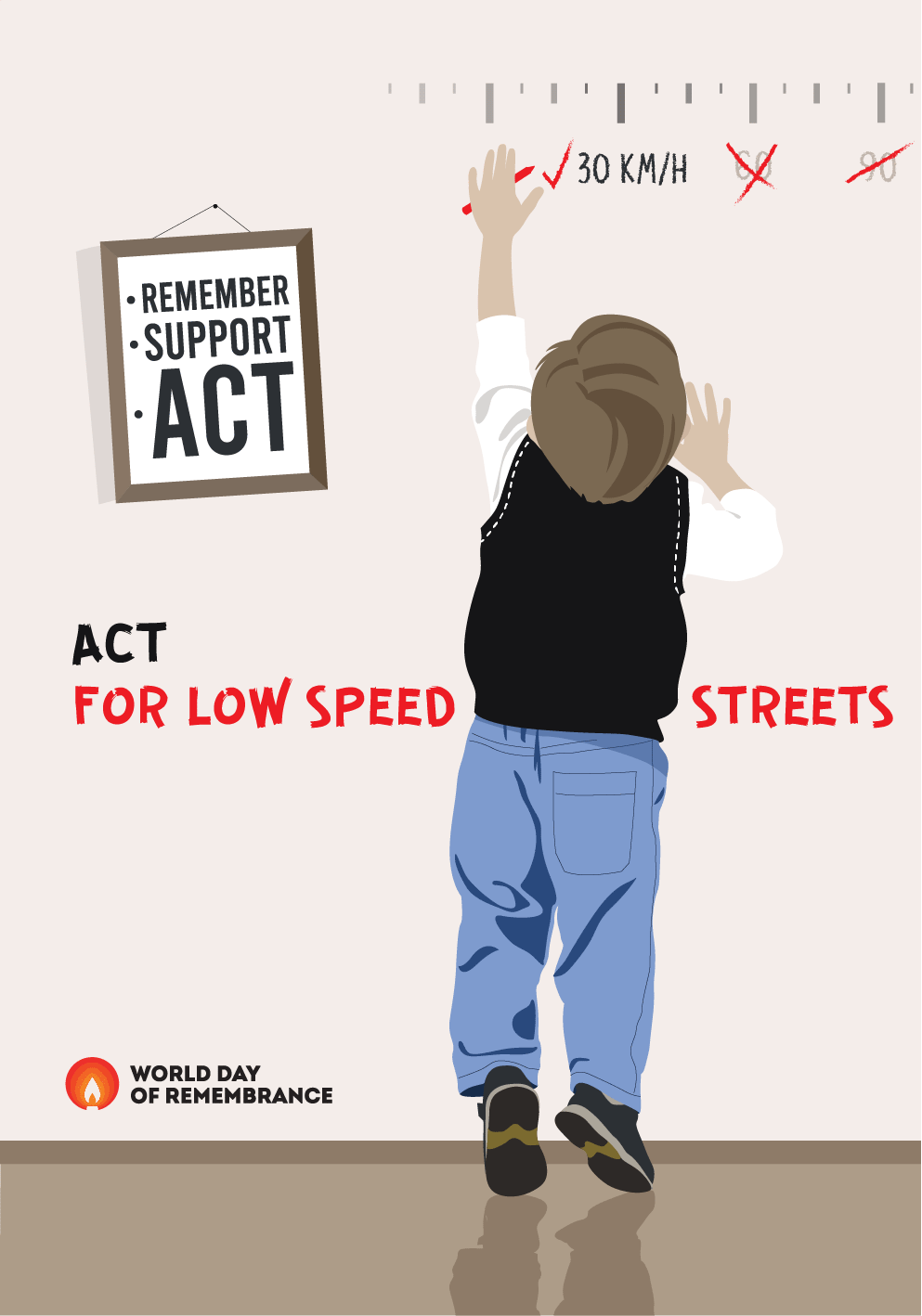SABRINA - WORLD DAY OF REMEMBRANCE 2021: CYCLISTS ARE AMONGST THE MOST VULNERABLE ROAD USERS
16-11-2021
A joyful bicycle ride can turn into a nightmare in a second. Your life and life of the people around you can be changed in a blink of an eye. Even though we know this is true, we don’t realize the severity of these words until it happens to us or somebody we know and love. It, unfortunately, happened to Lana (24) from Slovenia.
Lana gets severely injured on her bike ride in Austria
 Lana’s sister Alja shared with us a moment that has changed the lives of her sister and the whole family. It happened at the beginning of May 2021. Lana and her boyfriend went to Austria where he participated in a sports competition. When it was finished, they decided to take advantage of a beautiful sunny day and go for a bicycle ride in the vicinity of the Austrian capital city Vienna. A split second of inattention caused Lara’s front wheel to touch the back wheel of her boyfriend’s bike and they both fell. He fell to the right side and suffered only a few minor scratches. She fell to the left. At that exact moment, a car passed, luckily driving at a lower speed than allowed on that road. But still … Lana hit with her head to the car’s bumper and rolled on the road. The helmet did protect her, but the impact of the fall was still massive.
Lana’s sister Alja shared with us a moment that has changed the lives of her sister and the whole family. It happened at the beginning of May 2021. Lana and her boyfriend went to Austria where he participated in a sports competition. When it was finished, they decided to take advantage of a beautiful sunny day and go for a bicycle ride in the vicinity of the Austrian capital city Vienna. A split second of inattention caused Lara’s front wheel to touch the back wheel of her boyfriend’s bike and they both fell. He fell to the right side and suffered only a few minor scratches. She fell to the left. At that exact moment, a car passed, luckily driving at a lower speed than allowed on that road. But still … Lana hit with her head to the car’s bumper and rolled on the road. The helmet did protect her, but the impact of the fall was still massive.
The paramedics and a helicopter that took Lana to the hospital in Vienna came fast. She had internal bleedings and swollen brain with the MR showing severely damaged brainstem and receptors. Lana’s injuries caused her to be in a coma for almost four months. Now she is in Rehabilitation center Soča in Ljubljana, Slovenia. She is fed by a tube, she cannot talk nor walk, doctors don’t know how infected her sight is – it could be blurry or inverted.
Lana is a passionate athlete and was about to finish her kinesiology master’s degree at the University of Ljubljana, Slovenia. She loves life, the outdoors, and all kinds of sports, one of them is cycling.
The support of Lana’s loved ones, immense care and dedication of the doctors and the whole staff at the rehabilitation center Soča in Ljubljana, and Lana’s incredible love for life and cycling keep her going. Her favorite therapies include a hand-operated bicycle and a tricycle. She is making small steps that will hopefully lead to a big recovery.
The statistics are worrying and should urge us to act
 There are 41,000 cyclists who die in road traffic-related crashes worldwide every year. In the European Union (EU) countries, more than 2000 cyclists die on the roads each year. These are not just numbers. These are real people with names, families, friends, and life stories.
There are 41,000 cyclists who die in road traffic-related crashes worldwide every year. In the European Union (EU) countries, more than 2000 cyclists die on the roads each year. These are not just numbers. These are real people with names, families, friends, and life stories.
As they wrote in the Cyclist safety manual published by World Health Organization, “many leave their homes as they would on any normal day – for school, work, worship, or meeting friends – never to return. Millions of more people are injured in road traffic-related crashes while cycling, some of whom become permanently disabled. These incidents cause much suffering and grief, as well as economic hardship for families and loved ones.”
In Slovenia (2.1 million inhabitants), cyclists were involved in 1,293 road accidents in 2020. Eight cyclists died, 206 were severely injured (Slovenian Traffic Safety Agency – in Slovenian language). In comparison to 2016, there were 38% fewer fatalities amongst cyclists in Slovenia. On the other hand, the number of severely injured is 15% higher. The proportion of cyclists who died in the last 5 years is 10% of all deaths, which means cyclists do not belong to the most exposed group of road users. On the contrary, the proportion of severely injured in the last 5 years shows, cyclists represent the highest number - the share among all road users was 24%.
On the EU roads, we could see the reduction in traffic volumes when the measures associated with the COVID-19 pandemic took effect. Unfortunately, road deaths have not been reduced to the same degree, in some areas they have stayed the same or even risen. In Austria, on the contrary, “due to the lower traffic volume during the corona-related lockdowns from March to May and in November and December 2020, road traffic accidents with personal injury in Austria decreased significantly: 38 074 people were injured or killed in road traffic accidents in 2020”, according to Statistics Austria. This represents a decrease of 16% or 7,482 people compared to 2019 (45,556).
For cyclists, the statistics are unfortunately not so encouraging. The number of injured or fatally injured cyclists rose by 14% in 2020 compared to 2019 which corresponds to an increase of three injured or fatally injured cyclists per day. Statistics Austria report in the last 30 years, there were never as many cyclists injured as in 2020.
The fact is there were more cyclists on the road last year. In these COVID-19 times, people across the globe look to bicycling as socially distant transportation and recreation option. The emerging role of bicycles serves as a critical reminder of the need to improve infrastructure, making it safer, forgiving, sustainable, and comfortable. There should be no trade-off between higher volumes of cyclists and their safety.
World Day of Remembrance
 Last year we celebrated the 25th anniversary of the international observance of a day dedicated to remembering the many millions of road traffic victims around the world. This year marks the start of the new Decade of Action for Road Safety 2021-2030, during which World Day will play a very important part – through highlighting the reasons for all the necessary actions during this coming Decade. World Day of Remembrance 2021 puts the spotlight on the reduction of traffic speeds. Low speeds have the potential to prevent many deaths and serious injuries, especially those of pedestrians and cyclists as well as all other vulnerable road users, including children, the elderly, and the disabled.
Last year we celebrated the 25th anniversary of the international observance of a day dedicated to remembering the many millions of road traffic victims around the world. This year marks the start of the new Decade of Action for Road Safety 2021-2030, during which World Day will play a very important part – through highlighting the reasons for all the necessary actions during this coming Decade. World Day of Remembrance 2021 puts the spotlight on the reduction of traffic speeds. Low speeds have the potential to prevent many deaths and serious injuries, especially those of pedestrians and cyclists as well as all other vulnerable road users, including children, the elderly, and the disabled.
Inappropriate speed was the main cause of fatal road accidents also in Austria in 2020. It killed 110 people (2019: 103, 2018: 98). This is 32% of all fatally injured people, which is significantly higher than in 2018 (24%) and 2019 (25%) (Statistics Austria).
Besides the specific theme of Low Speeds for #WDoR2021, as every year the objectives of this day are to provide a platform for road traffic victims and their families to:
• remember all people killed and seriously injured on the roads;
• acknowledge the crucial work of the emergency services;
• draw attention to the generally trivial legal response to culpable road deaths and injuries
• advocate for better support for road traffic victims and victim families;
• promote evidence-based actions to prevent and eventually stop further road traffic deaths and injuries.
SABRINA project calls for safer cycling infrastructure
In the SABRINA project, we are aware of the fact the human factor is and will remain present when accidents happen. However, we can save lives and prevent serious injuries also with well-planned, built, and maintained road infrastructure which can to some extent forgive human mistakes. To protect cyclists as one of the most vulnerable road users, we need well-designed and well-maintained roads and cycling networks. We have the tools and the knowledge to make the bicycle routes safer, save lives, and reduce trauma on the roads. The goal of the SABRINA project is to help decision-makers to plan, design, and implement safe and sustainable solutions for improved cycling infrastructure in the Danube region and hopefully beyond. It is not enough just to build cycling infrastructure. It needs to be safe.
We do not want more victims to remember. We want to live our lives together. We will all stop on Sunday, 21 November 2021 to Remember. Support. Act. Remembering victims and their families, supporting those who have been affected by road crashes, and acting to prevent further suffering. Let’s do that every day and prevent the carnage on the roads. For Lana, the cyclists, and all the other road users worldwide.
Photo 1: Lana (personal archive)
![]()



